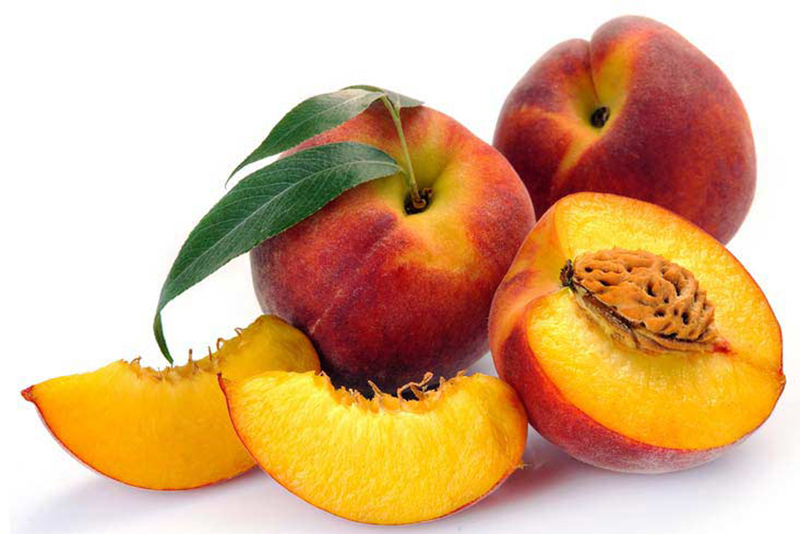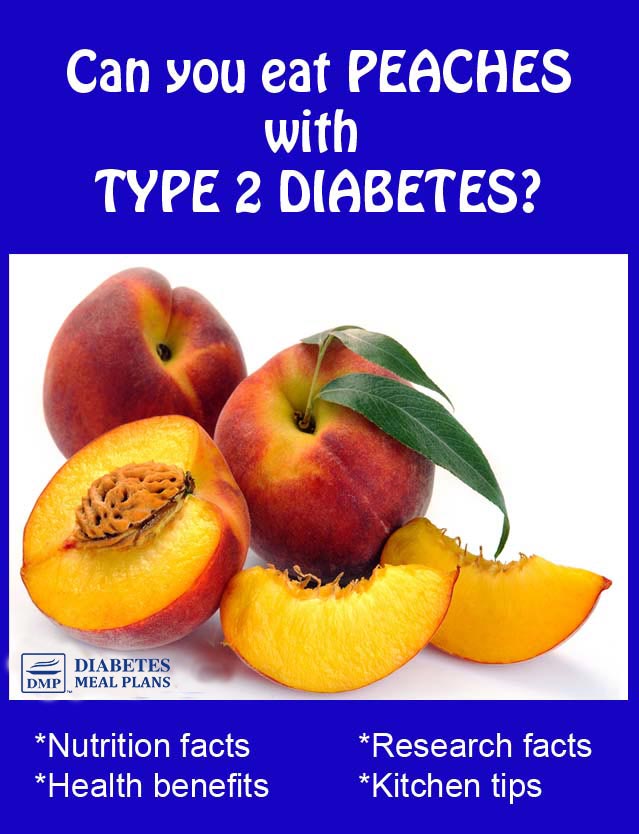Mmm, peaches…
For many, this fuzzy yellow-orange stone fruit is the highlight of summer – and for good reason!
Biting into a perfectly ripe peach on a sunny day and feeling the juice dribble down your chin is truly an experience like no other.
Peaches originated in China, and have been eaten and enjoyed since at least 1000 BC. The fruit is typically classified as either ‘clingstone’ (where the peach flesh is attached to the stone) or ‘freestone’ types (where the stone comes away freely from the flesh). Both types can be found in either yellow or white varieties.

But how, you may be wondering, do peaches fit into a healthy diabetic diet?
While there are high carb fruits that are best avoided, there are also a range of low carb fruits that can be enjoyed in moderation – the beautiful peach happens to be one of them.
Peach Nutrition Facts
- Peaches are low in calories and moderately low in carbohydrates: one small peach contains 51 calories and 12 grams of total carbohydrates. So if you are going to eat them, only one small peach per serving is recommended.
- When it comes to vitamins, peaches let you eat the alphabet – that is, they’re a fantastic source of vitamins A, B, and C!
- They’re also a good source of fiber: a small peach has 2 grams, which means they are around 10 grams net carbs per peach.
- Chow down on a peach to get a great dose of vitamins E and K, iron, calcium, potassium, magnesium, manganese, phosphorus, and zinc!
- Peaches have a low glycemic index of just 28.
Health Benefits of Peaches
Vitamin C: This antioxidant can lower blood pressure, strengthen the immune system, and help with glucose metabolism.
Vitamin K: Can improve bone health and prevent fractures. Vitamin K helps your body absorb calcium, and may even reduce insulin resistance in older adults.
Vitamin A: This antioxidant fortifies the immune system and boosts bone, skin, and eye health.
Fiber: Helps you stay satiated after eating, prevents blood sugar spikes, and keeps your gut bacteria happy.
Ellagic acid: An antioxidant polyphenol found in many fruits and vegetables, which has anti-cancer, anti-cardiovascular disease, and anti-diabetic effects such as enhancing pancreatic beta-cell function and decreasing glucose intolerance.

Research on Peaches
Consuming peaches (as well as other stone fruit like plums and nectarines) has been found to be associated with having a lower weight and a lower BMI, as well as a reduced risk of high blood pressure.
Animal studies have found that drinking polyphenol-rich peach juice can prevent the development of risk factors for obesity-related metabolic disorders (including high blood glucose and insulin resistance) and heart disease.
Fascinatingly, a polysaccharide sugar derived from peach gum has been found to be effective in helping control post-meal blood sugar levels; researchers say it may have potential as a non-insulin therapy for diabetes.
Ellagic acid (a polyphenol contained in peaches) also exerts anti-diabetic action on the beta cells of the pancreas. This stimulates insulin secretion and decreases glucose intolerance.
Although we strongly discourage smoking, smokers may be able to increase their body’s metabolism of some of the toxic compounds they ingest and protect their tissues from nicotine toxicity by eating white peaches. You don’t have to be a smoker to enjoy these results, though – anyone can benefit from a reduction in overall toxicity.
Finally, animal studies have also found that peach fruit can reduce chemotherapy-induced toxicity and oxidative stress.
Points for Consideration
Peach allergies are relatively common, so peaches should obviously be avoided if you have this allergy.
One interesting thing to remember is that the main cause of peach allergy is found only in the fruit’s peel: a study of a group of children who had previously had allergic reactions to peaches found that 90% of the children could tolerate peeled peach just fine.
Peaches in the Kitchen
Selection
Good peaches can be famously difficult to select, but the best ones typically appear in the midst of the summer months. Look for peaches that are firm but not rock-hard, and avoid any that are overly soft or mushy. They should smell fragrant.
Storage
Peaches can be preserved for long-term storage; otherwise, you’ll need to eat them within a few days of purchase. They can typically be kept at room temperature for up to three or four days, and keeping them in the fridge can extend their viability for a day or two.
To prevent mushiness, don’t wash your peaches until right before you’re ready to eat them.
Uses
As you probably know, peaches can be eaten whole – just bite into ‘em for a flavor explosion! If you don’t like the fuzz on the outside, most of it can be washed off.
Peaches are a match made in heaven for any simple bowl of low carb nutty cereal or plain Greek yogurt. They also taste fantastic in smoothies or paired with a nice cheese.
Cooking
If you’re cooking your peaches, you’ll probably want to remove the skin, as it can become tough when cooked. You can do this by blanching your peaches in boiling water for one minute, and then immediately submerging them in cold water. The skin should then slip off easily.
Peaches are fantastic baked in the oven and topped with a creamy nut butter or yogurt.
Cutting Techniques
Peaches can be sliced like apples, and you can choose to remove the skin or not. Remember, though, that the peel is the most fiber-rich part of the fruit!
So, as you can see, you can enjoy peaches with type 2 diabetes – just keep it to one small peach at one sitting. And like most fruits, it’s best to pair them with a fat or protein to slow down the absorption of sugars.
Please pin, tweet or share this info to help others. Thanks!

Penelope Gilson
In Europe we eat a lot of nectarines, do you class these with the same benefits as peaches? Many thanks for all your wonderful information xx
Jedha: Nutritionist (MNutr)
Nectarines do contain slightly more carbs, 15g per medium fruit. If you are to eat them, eat one small fruit only would be recommended.
Leisa Moten
This summer our wild peach trees produced an abundant amount if peaches but I wasn’t sure if I could include them in my meal plans. Thanks for this info. So since you have this info I took the peaches from one tree and cooked them down, added some cinnamon and some Pyure (stevia/erythritol blend) to make a spread to stir in Greek yogurt or enjoy on some Eureka toast. Thanks!